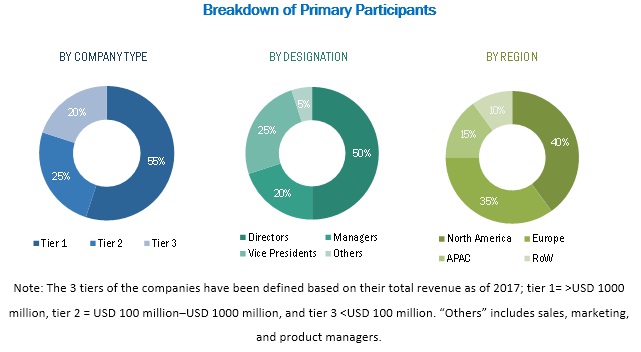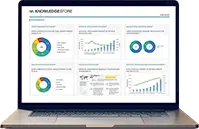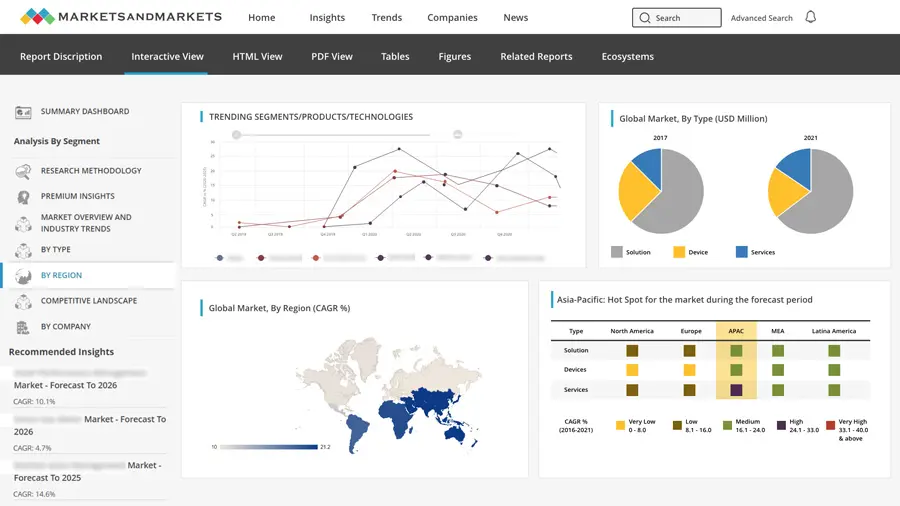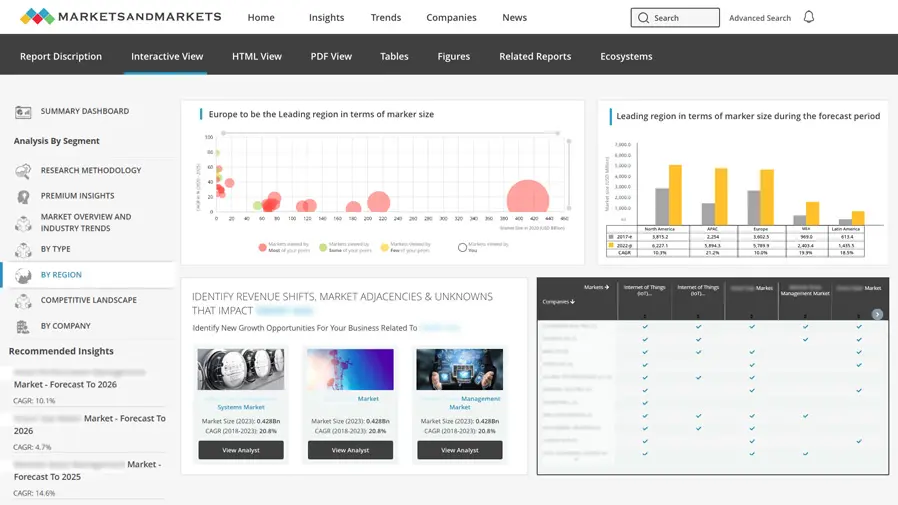Tunnel Automation Market by Component (HVAC, Lighting & Power Supply, Signalization), Offering (Hardware, Software, and Services), Tunnel Type (Railway Tunnels and Highway and Roadway Tunnels), and Geography - Global Forecast to 2035
The Tunnel Automation Market Overview From 2025 To 2035
The tunnel automation market is entering a transformative phase with technology playing a pivotal role in redefining how tunnels are operated maintained and experienced. From railway tunnels to roadway infrastructure the integration of automation across HVAC lighting signalization and power systems is unlocking new levels of efficiency safety and sustainability. As cities grow and transportation demands rise tunnel automation will be indispensable to building resilient infrastructure for the future. With strong growth projected from 2025 to 2035 stakeholders in this market including technology providers infrastructure developers and public agencies have a tremendous opportunity to shape the future of global mobility..
Tunnel Automation Market, By Offering:
- Hardware
- Software
- Services
Tunnel Automation Market, By Tunnel Type
- Railways
- Highway and Roadway Tunnels
Tunnel Automation Market, By Component
- HVAC
- Lighting & Power Supply
- Signalization
- Others
Tunnel Automation Market, By Geography
-
North America
- US
- Canada
- Mexico
-
Europe
- UK
- Germany
- France
- Switzerland
- Rest of Europe (Italy, the Netherlands, Denmark, Slovenia, Sweden, Finland, Norway, Romania, Bulgaria, and Poland)
-
Asia Pacific (APAC)
- China
- Japan
- Australia
- Rest of APAC (India, Singapore, Malaysia, and Thailand)
-
Rest of the World (RoW)
- Middle East and Africa
- South America
Key questions addressed by the report:
- Where will all these developments take the industry in the mid to long term?
- What are the upcoming industrial trends for market?
- How inorganic growth strategies implemented by key players will impact the growth rate of the market, and who will have the undue advantage?
- What are the current investment trends in the market?
To speak to our analyst for a discussion on the above findings, click Speak to Analyst

Table of Contents
1 Introduction (Page No. - 16)
1.1 Objectives of the Study
1.2 Definition
1.3 Scope of the Study
1.3.1 Markets Covered
1.3.2 Geographic Scope
1.3.3 Years Considered for the Study
1.4 Currency
1.5 Limitations
1.6 Stakeholders
2 Research Methodology (Page No. - 20)
2.1 Research Data
2.1.1 Secondary and Primary Research
2.1.1.1 Key Industry Insights
2.1.2 Secondary Data
2.1.2.1 List of Major Secondary Sources
2.1.2.2 Secondary Sources
2.1.3 Primary Data
2.1.3.1 Primary Interviews With Experts
2.1.3.2 Breakdown of Primaries
2.1.3.3 Primary Sources
2.2 Market Size Estimation
2.2.1 Bottom-Up Approach
2.2.1.1 Approach for Bottom-Up Analysis (Demand Side)
2.2.2 Top-Down Approach
2.2.2.1 Approach for Top-Down Analysis (Supply Side)
2.3 Market Breakdown and Data Triangulation
2.4 Research Assumptions
3 Executive Summary (Page No. - 29)
4 Premium Insights (Page No. - 34)
4.1 Attractive Opportunities in Market
4.2 Market in Europe, By Country and Component
4.3 Market, By Offering
4.4 Market, By Tunnel Type
4.5 Market, By Component
4.6 Market, By Country
5 Market Overview (Page No. - 38)
5.1 Introduction
5.2 Market Dynamics
5.2.1 Drivers
5.2.1.1 Rising Incidents of Road Accidents Leading to Increasing Demand for Enhanced Security
5.2.1.2 Government Regulations Favoring Adoption of Tunnel Automation Solutions
5.2.1.3 Growing Integration of IoT and Cloud With Tunnel Automation Solutions
5.2.2 Restraints
5.2.2.1 High Deployment Costs of Tunnel Automation Solutions
5.2.3 Opportunities
5.2.3.1 Increasing Number of Tunnel Construction Projects
5.2.3.2 Integration of Analytics in Tunnel Management
5.2.4 Challenges
5.2.4.1 Lack of Technically Skilled Labors to Install and Monitor Tunnel Automation Solutions
5.3 Value Chain Analysis
6 Tunnel Automation Market, By Offering (Page No. - 45)
6.1 Introduction
6.2 Hardware
6.3 Software
6.4 Services
7 Market, By Tunnel Type (Page No. - 51)
7.1 Introduction
7.2 Railways
7.2.1 Subway Stations and Tunnels
7.2.2 Railway Stations and Tunnels
7.3 Highway and Roadway Tunnels
8 Tunnel Automation Market, By Component (Page No. - 58)
8.1 Introduction
8.2 HVAC
8.3 Lighting & Power Supply
8.3.1 Tunnel Lighting
8.3.2 Power Supply
8.4 Signalization
8.4.1 Traffic Control Systems
8.4.2 Public Announcement and Alarm Systems
8.5 Others
8.5.1 Fire Detection Systems
8.5.2 Traffic Management Systems
8.5.3 Central Control and Monitoring Systems
8.5.4 Video Surveillance Systems
8.5.5 Incident Detection Systems
8.5.6 Communication Systems
8.5.7 Gas Detection Systems
9 Geographic Analysis (Page No. - 82)
9.1 Introduction
9.2 North America
9.2.1 US
9.2.2 Canada
9.2.3 Mexico
9.3 Europe
9.3.1 UK
9.3.2 Germany
9.3.3 France
9.3.4 Switzerland
9.3.5 Rest of Europe
9.4 Asia Pacific
9.4.1 China
9.4.2 Japan
9.4.3 Australia
9.4.4 Rest of Asia Pacific (RoAPAC)
9.5 Rest of the World (RoW)
9.5.1 Middle East and Africa (MEA)
9.5.2 South America
10 Competitive Landscape (Page No. - 112)
10.1 Introduction
10.2 Ranking Analysis of Market Players
10.3 Competitive Scenario
10.3.1 Expansions
10.3.2 Product Launches and Developments
10.3.3 Acquisitions
10.3.4 Partnerships, Collaborations, Contracts, and Joint Ventures
11 Company Profiles (Page No. - 121)
11.1 Key Players
(Business Overview, Products Offered, Recent Developments, MnM View, SWOT Analysis)*
11.1.1 Siemens
11.1.2 Johnson Controls
11.1.3 ABB Group
11.1.4 Sick Ag
11.1.5 Honeywell
11.1.6 Philips Lighting
11.1.7 Trane
11.1.8 Swarco
11.1.9 Eaton
11.1.10 Kapsch
*Business Overview, Products Offered, Recent Developments, MnM View, SWOT Analysis Might Not Be Captured in Case of Unlisted Companies.
11.2 Other Companies
11.2.1 Psi Incontrol
11.2.2 Agidens
11.2.3 Sice
11.2.4 Indra
11.2.5 Osram
11.2.6 Advantech
11.2.7 Codel International
11.2.8 General Electric
11.2.9 Phoenix Contact
11.2.10 Delta Electronics
12 Appendix (Page No. - 158)
12.1 Insights of Industry Experts
12.2 Discussion Guide
12.3 Knowledge Store: Marketsandmarkets’ Subscription Portal
12.4 Available Customizations
12.5 Related Reports
12.6 Author Details
List of Tables (64 Tables)
Table 1 Tunnel Automation Market, By Offering, 2015–2023 (USD Million)
Table 2 Market for Hardware, By Component, 2015–2023 (USD Million)
Table 3 Market for Software, By Component, 2015–2023 (USD Million)
Table 4 Market for Services, By Component, 2015–2023 (USD Million)
Table 5 Market, By Tunnel Type, 2015–2023 (USD Million)
Table 6 Market for Railway Tunnels, By Type, 2015–2023 (USD Million)
Table 7 Market for Railway Tunnels, By Component, 2015–2023 (USD Million)
Table 8 Market for Subway Stations and Tunnels, By Component, 2015–2023 (USD Million)
Table 9 Market for Railway Stations and Tunnels, By Component, 2015–2023 (USD Million)
Table 10 Market for Highway and Roadway Tunnels, By Component, 2015–2023 (USD Million)
Table 11 Market, By Component, 2015–2023 (USD Million)
Table 12 Tunnel Automation Market for HVAC, By Offering, 2015–2023 (USD Million)
Table 13 Market for HVAC for Railway Tunnels, By Component Type, 2015–2023 (Million Units)
Table 14 Market for HVAC, By Region, 2015–2023 (USD Million)
Table 15 Market for HVAC in Europe, By Country, 2015–2023 (USD Million)
Table 16 Market for HVAC in North America, By Country, 2015–2023 (USD Million)
Table 17 Market for HVAC in APAC, By Country, 2015–2023 (USD Million)
Table 18 Market for HVAC in RoW, By Region, 2015–2023 (USD Million)
Table 19 Market for HVAC, By Tunnel Type, 2015–2023 (USD Million)
Table 20 Market for Lighting & Power Supply, By Offering, 2015–2023 (USD Million)
Table 21 Tunnel Automation Market for Lighting & Power Supply, By Region, 2015–2023 (USD Million)
Table 22 Market for Lighting & Power Supply in Europe, By Country, 2015–2023 (USD Million)
Table 23 Market for Lighting & Power Supply in North America, By Country, 2015–2023 (USD Million)
Table 24 Market for Lighting & Power Supply in APAC, By Country, 2015–2023 (USD Million)
Table 25 Market for Lighting & Power Supply in RoW, By Region, 2015–2023 (USD Million)
Table 26 Market for Lighting & Power Supply, By Tunnel Type, 2015–2023 (USD Million)
Table 27 Tunnel Automation Market for Signalization, By Offering, 2015–2023 (USD Million)
Table 28 Market for Signalization, By Region, 2015–2023 (USD Million)
Table 29 Market for Signalization in Europe, By Country, 2015–2023 (USD Million)
Table 30 Market for Signalization in North America, By Country, 2015–2023 (USD Million)
Table 31 Market for Signalization in APAC, By Country, 2015–2023 (USD Million)
Table 32 Market for Signalization in RoW, By Region, 2015–2023 (USD Million)
Table 33 Market for Signalization, By Tunnel Type, 2015–2023 (USD Million)
Table 34 Market for Others, By Offering, 2015–2023 (USD Million)
Table 35 Tunnel Automation Market for Others, By Region, 2015–2023 (USD Million)
Table 36 Market for Others in Europe, By Country, 2015–2023 (USD Million)
Table 37 Market for Others in North America, By Country, 2015–2023 (USD Million)
Table 38 Market for Others in APAC, By Country, 2015–2023 (USD Million)
Table 39 Market for Others in RoW, By Region, 2015–2023 (USD Million)
Table 40 Market in North America, By Country, 2015–2023 (USD Million)
Table 43 Market in North America, By Component, 2015–2023 (USD Million)
Table 44 Market in Us, By Component, 2015–2023 (USD Million)
Table 45 Tunnel Automation Marketin Canada, By Component, 2015–2023 (USD Million)
Table 46 Market in Mexico, By Component, 2015–2023 (USD Million)
Table 47 Market in Europe, By Country, 2015–2023 (USD Million)
Table 48 Market in Europe, By Component, 2015–2023 (USD Million)
Table 49 Market in Uk, By Component, 2015–2023 (USD Million)
Table 50 Market in Germany, By Component, 2015–2023 (USD Million)
Table 51 Market in France, By Component, 2015–2023 (USD Million)
Table 52 Market in Switzerland, By Component, 2015–2023 (USD Million)
Table 53 Market in RoE, By Component, 2015–2023 (USD Million)
Table 54 Market in APAC, By Country, 2015–2023 (USD Million)
Table 55 Market in APAC, By Component, 2015–2023 (USD Million)
Table 56 Tunnel Automation Market in China, By Component, 2015–2023 (USD Million)
Table 57 Market in Japan, By Component, 2015–2023 (USD Million)
Table 58 Market in Australia, By Component, 2015–2023 (USD Million)
Table 59 Market in RoAPAC, By Component, 2015–2023 (USD Million)
Table 60 Market in RoW, By Region, 2015–2023 (USD Million)
Table 61 Market in RoW, By Component, 2015–2023 (USD Million)
Table 62 Market in Mea, By Component, 2015–2023 (USD Million)
Table 63 Tunnel Automation Market in South America, By Component, 2015–2023 (USD Million)
Table 64 Top Market Players in 2017
List of Figures (58 Figures)
Figure 1 Market: Research Design
Figure 2 Market Size Estimation Methodology: Bottom-Up Approach
Figure 3 Market Size Estimation Methodology: Top-Down Approach
Figure 4 Assumptions for the Research Study
Figure 5 Global Market, 2016–2023 (USD Million)
Figure 6 Others to Hold Largest Share of Market, By Component, in 2023
Figure 7 Hardware to Hold Largest Size of Market, By Offering, During Forecast Period
Figure 8 Railway Tunnels Held Larger Size of Market, By Tunnel Type, in 2017
Figure 9 Market, By Region, 2017
Figure 10 Increasing Incidents of Roadway and Highway Tunnel Accidents Fueling Growth of Market
Figure 11 UK Held Largest Share of Market in Europe in 2017
Figure 12 Hardware Held Largest Size of Market in 2017
Figure 13 Railway Tunnels Held Larger Size of Market in 2017
Figure 14 Others Held Largest Share of Market in 2017
Figure 15 US Held Largest Share of Market in 2017
Figure 16 Market: Drivers, Restraints, Opportunities, and Challenges
Figure 17 Top 5 Countries in North America and Europe in Terms of Road Accidents (In Thousands)
Figure 18 Costs Involved in Deployment of Tunnel Automation Solutions
Figure 19 Value Chain Analysis: Major Value Added During Research, Conceptualization, and Design, and Software Design and Development Phases
Figure 20 Market for Services to Grow at Highest CAGR During Forecast Period
Figure 21 Market for HVAC for Hardware to Grow at Highest CAGR During Forecast Period
Figure 22 Others to Hold Largest Size of Market for Services Throughout Forecast Period
Figure 23 Market for Railway Tunnels to Grow at Higher CAGR During Forecast Period
Figure 24 Market for HVAC for Railway Tunnels to Grow at Highest CAGR From 2018 to 2023
Figure 25 Market for HVAC for Highway and Roadway Tunnels to Grow at Highest CAGR During Forecast Period
Figure 26 Market for HVAC to Grow at Highest CAGR During Forecast Period
Figure 27 Market for HVAC for Services to Grow at Highest CAGR During Forecast Period
Figure 28 Tunnel Automation Market for HVAC in Canada to Grow at Highest CAGR During Forecast Period
Figure 29 Hardware to Hold Largest Size of Market for Lighting & Power Supply Throughout Forecast Period
Figure 30 US to Hold Largest Size of Market for Lighting & Power Supply in North America Throughout Forecast Period
Figure 31 Market for Signalization for Services to Grow at Highest CAGR During Forecast Period
Figure 32 US to Hold Largest Size of Market for Signalization in North America Throughout Forecast Period
Figure 33 Hardware to Hold Largest Size of Market for Others Throughout Forecast Period
Figure 34 Market for Others in Canada to Grow at Highest CAGR During Forecast Period
Figure 35 Geographic Snapshot: Market in China to Grow at Highest CAGR During Forecast Period
Figure 36 Tunnel Automation Market in APAC to Grow at Highest CAGR During Forecast Period
Figure 37 Snapshot of Market in North America
Figure 38 Market in Canada to Grow at Highest CAGR During Forecast Period
Figure 39 Tunnel Automation Market for HVAC in US to Grow at Highest CAGR During Forecast Period
Figure 40 Snapshot of Market in Europe
Figure 41 Market in Switzerland to Grow at Highest CAGR During Forecast Period
Figure 42 Market for HVAC in UK to Grow at Highest CAGR During Forecast Period
Figure 43 Market for HVAC in Switzerland to Grow at Highest CAGR During Forecast Period
Figure 44 Snapshot of Market in APAC
Figure 45 Market China to Grow at Highest CAGR During Forecast Period
Figure 46 Other Components to Hold Largest Size of Market in China Throughout Forecast Period
Figure 47 Tunnel Automation Market for HVAC in RoAPAC to Grow at Highest CAGR During Forecast Period
Figure 48 Market in Middle East and Africa to Grow at Higher CAGR During Forecast Period
Figure 49 Partnerships and Contracts Emerged as Key Growth Strategies Adopted By Major Players in Market Between 2016 and 2018
Figure 50 Market Evolution Framework: Partnerships and Contracts, Followed By Expansions, Fuelled Growth of Market During 2016–2018
Figure 51 Siemens: Company Snapshot
Figure 52 Johnson Controls: Company Snapshot
Figure 53 ABB Group: Company Snapshot
Figure 54 Sick AG: Company Snapshot
Figure 55 Honeywell: Company Snapshot
Figure 56 Philips Lighting: Company Snapshot
Figure 57 Eaton: Company Snapshot
Figure 58 Kapsch: Company Snapshot
The study involved four major activities in estimating the current size of the tunnel automation market. Exhaustive secondary research was done to collect information on the market, peer market, and parent market. The next step was to validate these findings, assumptions, and sizing with industry experts across the value chain through primary research. Both top-down and bottom-up approaches were employed to estimate the complete market size. After that, market breakdown and data triangulation methods were used to estimate the market size of segments and subsegments.
Secondary Research
The research methodology used to estimate and forecast the market begins with capturing data on revenue of key vendors in the market through secondary research. This study incorporates the use of extensive secondary sources, directories, and databases, such as Hoovers, Bloomberg Businessweek, Factiva, and OneSource to identify and collect information useful for the technical, market-oriented, and commercial study of the market. Vendor offerings have also been considered to determine the market segmentation. This entire research methodology includes the study of annual and financial reports of top players, presentations, press releases, journals, paid databases, trade directories, regulatory bodies, and safety standard organizations.
Primary Research
The tunnel automation market comprises several stakeholders, such as suppliers of raw material and manufacturing equipment; standard components, original equipment manufacturers (OEMs); original device manufacturers (ODMs) of tunnel automation; solutions providers; vendors of assembly, testing, and packaging solutions; and system integrators in the supply chain. Various primary sources from both the supply and demand sides of the market were interviewed to obtain qualitative and quantitative information. Following is the breakdown of primary respondents.

To know about the assumptions considered for the study, download the pdf brochure
Market Size Estimation
Both top-down and bottom-up approaches have been used to estimate and validate the total size of the market. These methods have also been used extensively to estimate the size of various market subsegments. The research methodology used to estimate the market size includes the following:
- Key players in major application areas and markets were identified through extensive secondary research.
- The industry’s supply chain and market size, in terms of value, were determined through primary and secondary research processes.
- All percentage shares, splits, and breakdowns were determined using secondary sources and verified through primary sources.
Data Triangulation
After arriving at the overall market size-using the estimation processes as explained above-the market was split into several segments and subsegments. To complete the overall market engineering process and arrive at the exact statistics of each market segment and subsegment, data triangulation, and market breakdown procedures were employed, wherever applicable. The data have been triangulated by studying various factors and trends from both the demand and supply sides. The market has also been validated using both top-down and bottom-up approaches.
Research Objective
- To define, describe, and forecast the overall market, in terms of value, by offering, tunnel type, component, and region
- To describe and forecast the market, in terms of value, by region–Asia Pacific (APAC), Europe, North America, and Rest of the World (RoW) along with their respective countries
- To provide detailed information regarding major factors influencing market growth (drivers, restraints, opportunities, and challenges) influencing the growth of the market
- To strategically analyze micromarkets with respect to individual growth trends, prospects, and contributions to the overall market
- To study the complete value chain of tunnel automation solutions
- To analyze opportunities in the market for stakeholders by identifying the high-growth segments of the tunnel automation ecosystem
- To strategically profile key players and comprehensively analyze their market position in terms of ranking and core competencies, along with detailing competitive landscape for market leaders
- To analyze strategic approaches such as product launches and development; acquisitions; contracts, agreements, collaboration, and partnerships; and expansion in the tunnel automation market
Available Customizations
Along with the market data, MarketsandMarkets offers customizations according to a company’s specific needs. The following customization options are available for the report:
Company Information
- Detailed analysis and profiling of additional market players (Up to 15)















Growth opportunities and latent adjacency in Tunnel Automation Market
As our university builds an underground construction research center this report can be relevant and helpful for us.